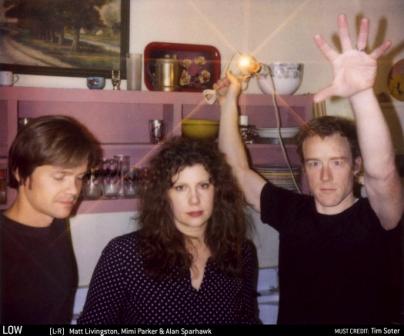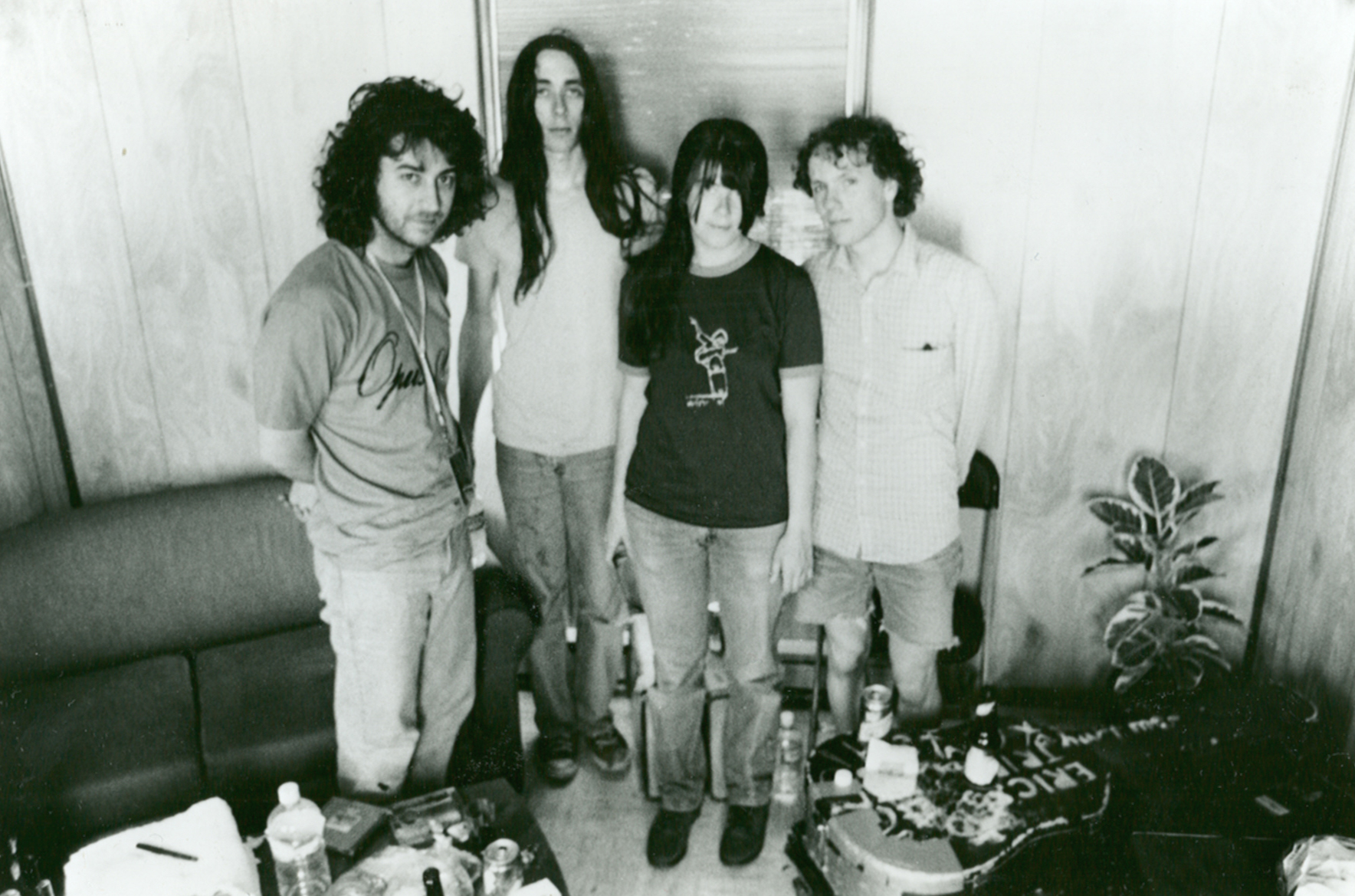Watching Stereolab at the Showbox on Mon., March 6, brought High Fidelity to mind—not just because one of the most memorable songs in the film was Stereolab’s “Lo Boob Oscillator,” a percolating piece of electro-pop fizz. Although the opening verse of “La/La lune est libre je croi” (“I believe the moon is free”) seems forever linked to a particular scene, a phrase from later in the film hit me while watching the London-based band and the adoring crowd: “Dance Music for Old People.”
My friends and I hadn’t seen Stereolab in several years, and I envied the one among us who caught an early evening performance at an outdoor sculpture garden. Now, cherry blossoms have started to bloom, but winter lingers—at least inside one of Seattle’s largest clubs, with one of the world’s most kaleidoscopic bands, it felt like spring for a couple of hours.
“Still hot after all these years,” remarked a friend on seeing singer Laetitia Sadier take the stage in a red halter dress. She and instrumentalist Tim Gane formed the Krautrock-inspired band 16 years ago and have been constants in the revolving groop (as die-hard fans call the band) of experimental musicians. Unfortunately, Mary Hansen, whose backup vocals complemented Sadier’s for nearly a decade, died in a cycling accident in 2002. Her absence was felt on the band’s next release, Margerine Eclipse—whose poor sales caused Elektra to drop the band—as well as onstage. Now, Sadier’s personality is all you see. Gane hides in the shadows, and the remaining band members seem earnest but anonymous.
Most avid Stereolab fans already have the material from the just-released Fab Four Suture, a batch of prereleased limited editions, but they could pick up a tour-only 7-inch or 3-inch mini-DVD at the merch table. Still, the “new” songs didn’t earn quite the same reactions as familiar tracks like Dots and Loops’ “Miss Modular,” which had been banished from the last tour in mourning for Hansen. “Disco party,” Sadier deadpanned, pointing like Tony Manero to the one mirror ball in town that doesn’t get much play. Its simple white refractions prompted couples to spin each other in mock ballroom twirls. Meanwhile, I tried to identify songs, but with 14 proper albums full of titles like “Outer Bongolia” and “Puncture in the Radax Permutation,” it was a futile exercise. Even my companions with encyclopedic music knowledge shrugged, giving themselves up to the music. “Just call it ‘Marxist Bubblegum Shower Curtain’,” one offered, which is about right.
Their final song, though, was the enchanting “Cybele’s Reverie,” and the crowd hung on Sadier’s dulcet vocals while it built to a frenzy of horns, guitars, and tambourines. The bang was softened by a dull encore, until the final instrumental unraveled into a motorik jam. Select old folks kept on grooving, one girl swinging her arms overhead like a go-go dancer. Among the lightly bopping majority, it looked out of place—but also like it felt really good.








